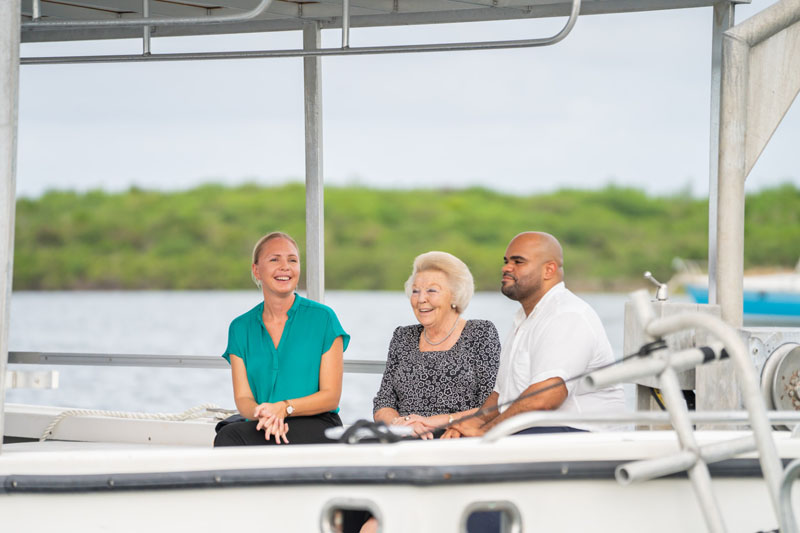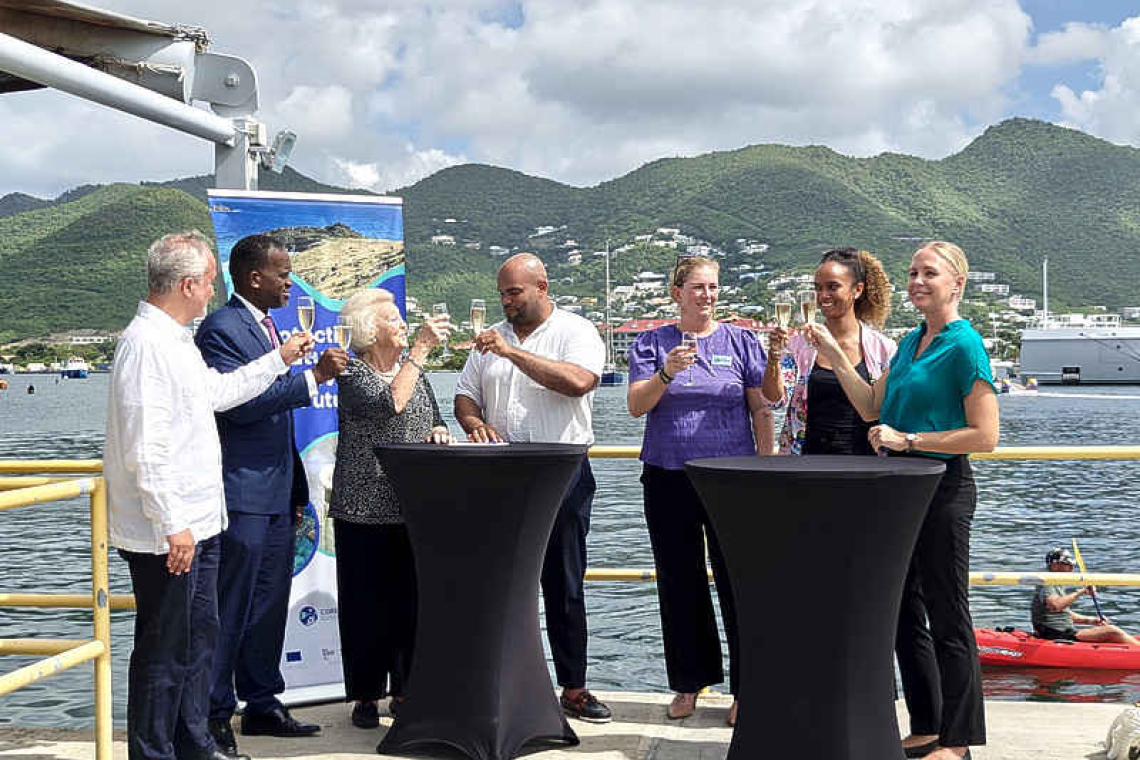Princess Beatrix witnesses the signing of a letter of intent by VROMI Minister Patrice Gumbs and Nature Foundation Director Leslie Hickerson to establish legislation that would designate Little Key Island as a protected area. Afterwards, attendees raised their glasses to commemorate the occasion.
~ Letter of intent for terrestrial protection signed ~
PHILIPSBURG--On the second day of her official visit, Princess Beatrix visited the Great Salt Pond Birding Platform and explored Simpson Bay, Mullet Pond and Little Key on a boat, highlighting the importance of environmental awareness and coastal protection.
The princess kicked off the second day of her official visit as patroness of the Dutch Caribbean Nature Alliance (DCNA) at the Great Salt Pond Birding Platform, where she spotted birds with Cornelis “Binkie” van Es, avid birding guide and Chairman of St. Maarten Nature Foundation.
Van Es discussed the cultural, natural and educational significance of the platform installed by Nature Foundation as part of its Birding and Ecotourism project, aimed at improve accessibility to nature, to improve local environmental awareness, encourage nature-based activities such as birdwatching, and inspire a deeper appreciation of local biodiversity. The princess said the foundation is doing important work and she hopes the platform will become a success.
Next on her itinerary was a boat tour through Simpson Bay, visiting Mullet Pond and Little Key. Mullet Pond is the only Ramsar-recognised wetland on the island, meaning that the pond is an internationally recognised area of importance and is protected under the Ramsar Convention, an international treaty for the conservation and sustainable use of wetlands to protect biodiversity and support ecosystem services. Little Key is a small island in the middle of Simpson Bay where mangrove restoration efforts are currently underway.

Aboard the appropriately-named “Queen Beatrix II” fishing boat, Princess Beatrix receives an explanation of the critical role mangroves play in coastal protection and marine biodiversity. Pictured from left (facing the camera): VROMI Policy Advisor Ildiko Gilders, Princess Beatrix and VROMI Minister Patrice Gumbs. Photo: DCNA, Lili Peterson.
Mangroves act as natural barriers that absorb wave energy, reduce erosion, shield shorelines from storms and rising sea levels, and support marine biodiversity by providing a unique habitat for a wide variety of fish, crustaceans, and other wildlife, serving as breeding and nursery grounds essential for numerous species, it was explained by representatives of local government and nature organisations. After the boat returned to the Coast Guard station, Princess Beatrix witnessed the signing of a letter of intent by Minister of Public Housing, Spatial Planning, Environment and Infrastructure VROMI Patrice Gumbs and Nature Foundation Director Leslie Hickerson to establish legislation that would designate Little Key Island as a protected area. This legislation is currently in its final stages and, if approved, will mark a historic moment for St. Maarten, as it will be the country’s first terrestrial protected area managed by Nature Foundation.
This part of her work visit on St. Maarten as DCNA patroness concluded with a toast with the government officials and nature organisation representatives, after which the princess made her way to the official re-opening of Princess Juliana International Airport.







